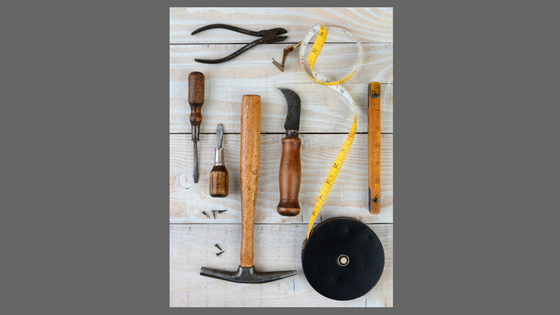Getting Your Makerspace Off the Ground

Reconfiguring Libraries
In all types of libraries, services, collections, and spaces are being redesigned as a response to changing patron needs and preferences. Advancement in technology is fueling these changes. Outside of libraries, these changes are causing businesses to rethink their products, services, and delivery methods. All of this together is changing how the modern workforce performs its work and the skill sets it needs in the dynamic modern workplace. At Johnson County Library, located in the Kansas suburbs surrounding Kansas City, these factors combined, led to the creation of a makerspace.[1] As the library re-evaluated its approach to traditional business reference services, a redesign of the central library was also in the planning stages. Moreover, a flexible approach to programming allowed these three forces to combine, creating fertile grounds for the launch of a makerspace.
Getting Started
Often times getting started can be the biggest hurdle. Makerspaces can take on many forms and include a wide variety of tools. Meredith Nelson, the reference librarian who launched Johnson County Library’s MakerSpace, offers a pragmatic approach to creating the makerspace that your community wants and needs. “Start out with programming. The people that show up are your supporters. Talk to them… Before investing, figure out what the community wants,” she said.[2] Her advice demonstrates that having a physical makerspace is not a requirement for embarking on related activities.
Similarly, Michelle Luhtala, New Canaan (CT) High School librarian, recommends not investing heavily in tools and technology initially. As she transformed a traditional high school library into a makerspace, she started with “a few things like basic craft supplies and Legos that other teachers had recommended, but she took her cues from the students.”[3] Both Nelson and Luhtala employed an approach that tested the makerspace waters before diving in head first.
Customizing Your Makerspace
Notably, makerspaces can take on many forms ranging from large dedicated spaces to a mobile concept where technology travels to patrons in various locations. Additionally, the types of technologies and tools made available in makerspaces ranges greatly. In short, makerspaces are not one-size-fits-all. For optimal success, makerspace resources, services, and programs should be customized to the community. For example, a public library serving a rural community may want to focus on soil science tools and drone technology as both are at the forefront of modern agriculture. This focus wouldn’t be a good fit for an urban community that likely would have other interests. Referring to Nelson’s advice to start small with programming, your patrons can tell you want they want and need. As you test the making waters, collect feedback to inform what your makerspace should look like as it matures.
Engaging All Ages
Often programming focuses on a singular age group. Storytimes are aimed at specific age ranges, while book discussions target a more mature audience. Programming that targets mixed age ranges is more difficult.
Like other library programming, makerspace programing can also focus on a specific age group. However, there is ample potential for families that encompass multiple age groups. Nelson says that she has seen “whole families engaged” in the Johnson County Library MakerSpace. Parents and grandparents visit with children and grandchildren to use the space’s tools and resources. As families, they attend programming activities like the MakerSpace Passport program, launched in the summer of 2016. Example projects in the Passport program included coding, soldering, a sewing project, woodworking, and a stop-motion movie. During the Passport program 2,333 projects were completed. Nelson notes that this programming series was very hands-on for staff, and therefore, quite time intensive. As a comparison, an interaction on the reference desk may be quite brief. The interactions in the MakerSpace tend to be more technical and in-depth, requiring significant staff time and expertise.
In summary, the idea of starting a makerspace can be overwhelming given the resources, expertise, and time commitment. However, you can ease into the project to develop a space that is useful for your community. No clear guide exists for creating the ideal MakerSpace, this is because they are focused on local needs and specific to each community. This ambiguity creates opportunity in crafting the best makerspace for your community.
References
[1] MakerSpace Home. (n.d.). Retrieved September 12, 2016, from https://www.jocolibrary.org/makerspace/makerspace-new.
[2] Meredith Nelson Interview [Personal interview]. (2016, September 7).
[3] Schwartz, B. K. (2016). Launching a Makerspace: Lessons Learned From a Transformed School Library. Retrieved September 12, 2016, from https://ww2.kqed.org/mindshift/2016/07/31/launching-a-makerspace-lessons-learned-from-a-transformed-school-library/
Tags: community building, library makerspace, makerspaces, public services, Resources, technology












